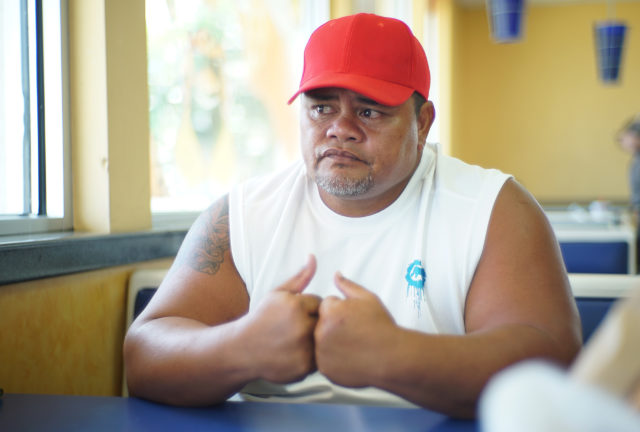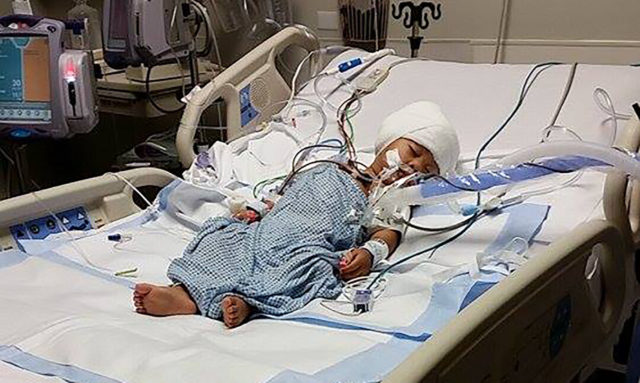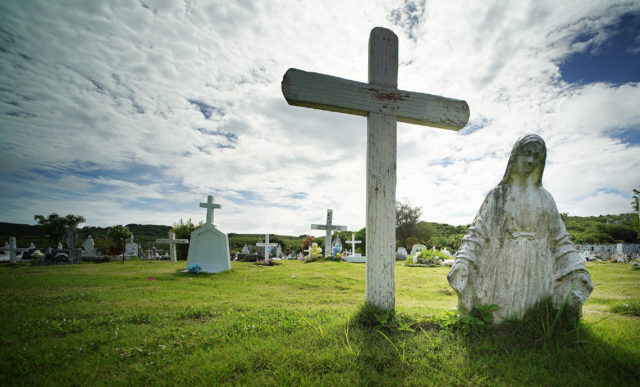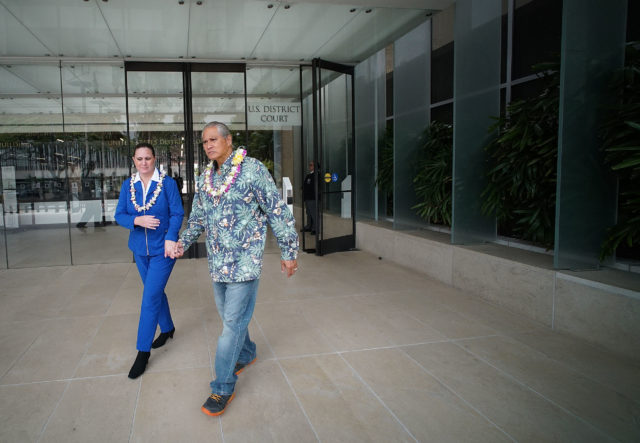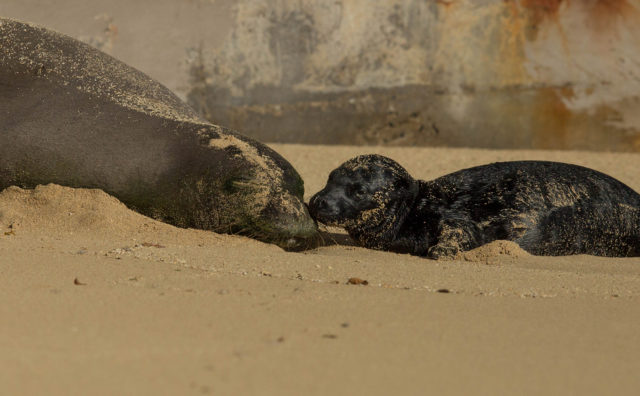8 Stories That Made a Difference in Hawaii This Year
By Landess Kearns
Our investigation into Hawaii’s workers’ compensation system, “Waiting In Pain” exposed a system whose rules often favor insurance companies and force some injured workers into a torturous, sometimes years-long battle to get treatment and benefits. Investigations editor John Hill spent more than eight months reporting the project, which will continue in 2018. We feel long-term investigations like ‘Waiting In Pain’ are crucial to keeping the powerful accountable and giving voice to the downtrodden. 3. Offshore Podcast: The Sacred Mountain The Offshore podcast is one of Civil Beat’s most ambitious undertakings in recent years. Podcast editor Jessica Terrell and multimedia producer April Estrellon built Offshore from the ground up, producing two seasons so far with a third on the way. In 2017, Offshore focused on Mauna Kea and the controversy surrounding the proposal to build a Thirty Meter Telescope in its series, “The Sacred Mountain.” While the struggle over the future of Mauna Kea has made national headlines, Offshore offered listeners an intimate look at the complex views of scientists who want to build another large telescope to explore the outer limits of the universe and those Native Hawaiians who consider that project a desecration of a sacred space. While “The Sacred Mountain” series began in the islands, it took listeners elsewhere in the U.S. where similar conflicts are playing out between development and Native American culture. Our team covered the protests against construction of an oil pipeline near the Standing Rock Reservation in North Dakota, and spent time with a tribe in Arizona who fought their own telescope battle years ago and now are trying to fight a mining development. Listen and subscribe here. 4. Resuscitation Of Rail This list wouldn’t be complete without mention of Honolulu’s beleaguered rail project. This year, rail faced a major roadblock when the Legislature failed to plug the project’s huge budget shortfall during its regular session. In a subsequent special session, lawmakers passed a $2.4 billion rescue bill to fund the project through a hotel tax increase and an extension of the general excise tax surcharge. From breaking news to in-depth stories to cartoons to editorials, we covered the rail controversy from a variety of angles. And we just hired reporter Marcel Honore to take over our rail coverage, so stay tuned as we chug into 2018. 5. A Toddler’s Assault
The story of Peyton Valiente, a toddler who nearly died after he was assaulted while at an in-home daycare, and his family’s struggle for justice continued to spark some of our most-read and impactful coverage this year. Peyton’s heartbreaking story was uncovered by investigations editor John Hill, whose reporting exposed the Honolulu Police Department’s flawed investigation of the assault. No one has ever been held accountable for the injuries to the child. As a result of our coverage, Peyton’s case received newfound attention and a review by the Attorney General’s office. Still, no charges were filed, and Peyton’s parents continue to seek justice. 6. Faith Betrayed
Earlier this year, reporter Anita Hofschneider traveled to Guam to report on the more than 100 people who filed lawsuits against the Catholic Church alleging sex abuse by priests. On an island where indigenous culture and Catholicism are deeply intertwined, the situation is agonizing for everyone involved. In our special report, “Faith Betrayed,” read and hear the stories of the survivors themselves. You can also learn more from an accompanying Offshore podcast, “Confronting Faith,” that further explores how people on Guam are reexamining their culture and faith in the wake of the scandal. This project was made possible by a grant from the Pulitzer Center on Crisis Reporting. 7. The Kealoha Scandal
On Oct. 20, former Honolulu Police Chief Louis Kealoha and his wife, Katherine, a deputy city prosecutor, were arrested by the FBI and indicted on 20 counts of criminal conspiracy, fraud and obstruction of justice. It was one of the widest-ranging public corruption cases in the city’s history. Since 2014, Civil Beat’s Nick Grube has doggedly reported on the evolving scandal, which began with a missing mailbox. The tentacles of the case have spread much wider, involving other members of the Honolulu Police Department. The Kealoha case will continue to unfold in 2018. 8. Monk Seal Webcam
This was the summer of the monk seal. And for several weeks we made it our mission to bring you ongoing live coverage of a newborn pup named Kaimana, who was born and weaned on a Waikiki beach, and her mother, Rocky. Not only was Civil Beat’s near-24/7 live coverage of Kaimana a first for our newsroom, it was a first for monk seal researchers and volunteers who were able to observe Kaimana and Rocky at all hours. Given the threatened nature of the species (there are only about 1,400 Hawaiian monk seals in the wild) the webcam became a valuable scientific resource. We also worked closely with NOAA to stream weekly “pupdates” on Facebook Live to keep the public informed about Kaimana’s progress as well as safety guidelines for the busy beach. The monk seal cam and the amount of attention it garnered around the globe also exposed Civil Beat’s work to an audience that may never have discovered us otherwise. While our roots are in public affairs reporting, we’re happy to dabble in adorable baby animals from time to time — especially if their stories have environmental significance.
|
.
Any original material on these pages is copyright © BishopAccountability.org 2004. Reproduce freely with attribution.
